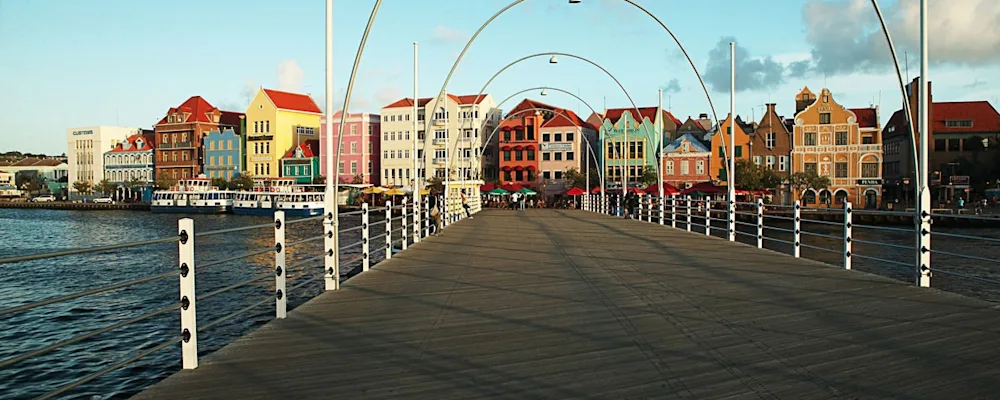
BRIDGES
 PARTAGER
PARTAGERNamed after some of the most memorable Dutch queens, these stately bridges span the many waterways of historic Willemstad. And one even dances across its water.
Queen Emma Bridge
Origin — Built in 1888 by Leonard Burlington Smith, and named after Queen Emma (1890–1898), this bridge connects the Punda and Otrobanda districts.
Points of interest — 16 floating pontoon boats support the “Pontoon Bridge.” Also known as the “Swinging Old Lady,” it swings open using two powerful ship motors, allowing ships to access the port. From 1901 to 1934, people had to pay a toll to cross the bridge — with the exception of pedestrians going barefoot. When the bridge is open to let ships from the harbour pass, pedestrians are transported free of charge by the ponchi, a small ferry.
The bridge was recently restored to its glory. All asphalt was taken off and replaced by original wooden boards and the pontoons were repaired or replaced.
Queen Juliana Bridge
Origin — Named after Queen Juliana (1948–1980). After almost a decade of construction, the bridge officially opened on Queen’s Day, (April 30) 1974.
Points of interest — One of the highest bridges in the world, at 185 feet above the sea level of St. Anna Bay to accommodate the tanker ships entering the narrow harbor. It weighs 3,400 tons and has four traffic lanes. The view is breathtaking, and includes the entire panorama of Punda, Otrobanda, and the Schottegat.
Queen Wilhelmina Bridge
Origin — Named after Queen Wilhelmina (1890–1945), this bridge was built in 1928 to link the commercial area of Punda with the old residential neighborhood of Scharloo.
Points of interest — Originally a drawbridge, it was modified to a fixed structure after the dock in the Waaigat was destroyed.






